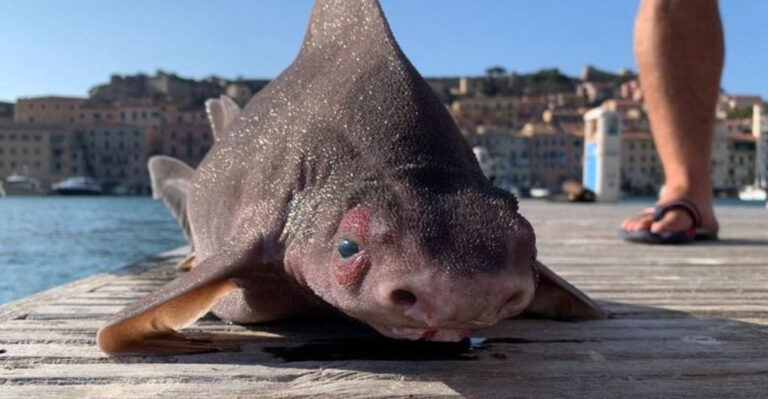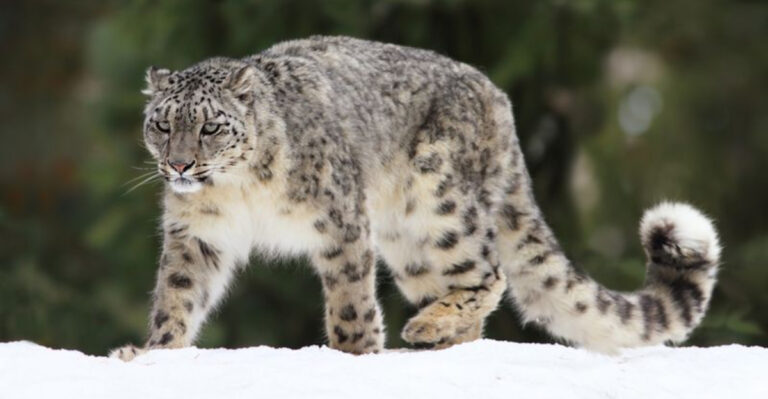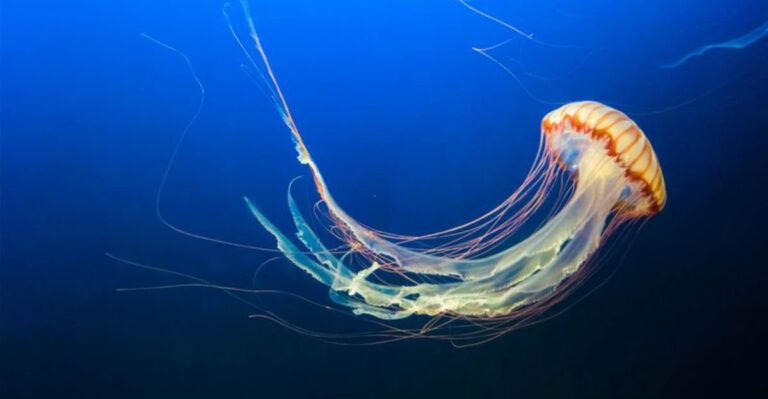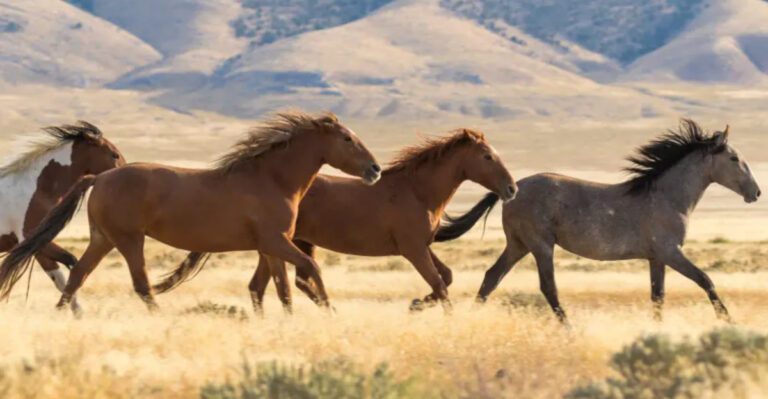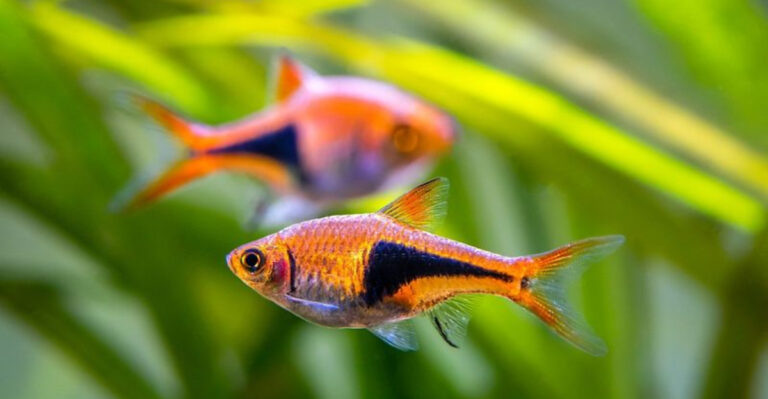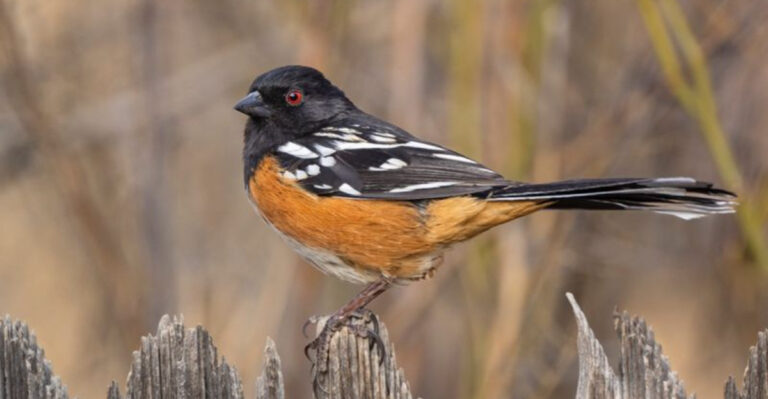Top 12 Animals And Wildlife In Nevada
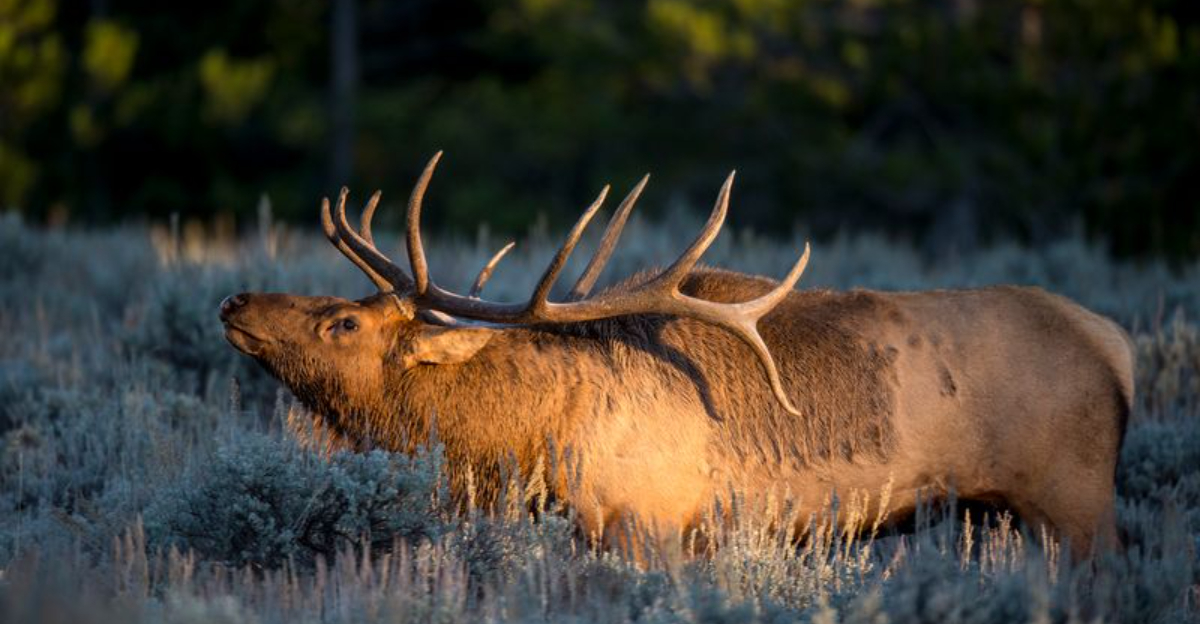
Nevada, with its diverse landscapes ranging from arid deserts to lush mountain ranges, is home to a fascinating array of wildlife.
This unique state hosts an impressive variety of animals that have adapted to its challenging environments. From the elusive to the iconic, Nevada’s wildlife offers endless opportunities for nature enthusiasts and photographers alike.
Whether you’re exploring the vast desert or hiking through the mountainous terrain, there’s always a chance to encounter some of the state’s most remarkable creatures.
1. Desert Bighorn Sheep
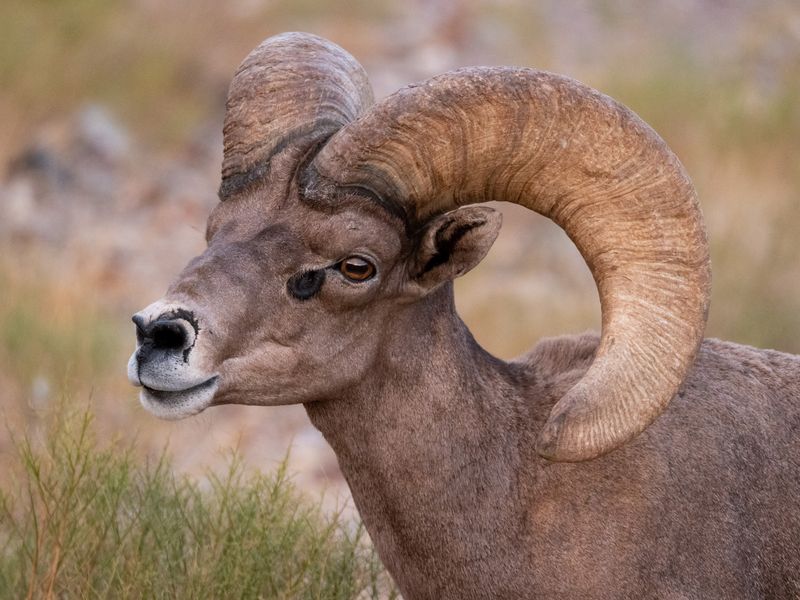
Found in the rugged desert mountains, the Desert Bighorn Sheep is an iconic symbol of Nevada’s wildlife. These resilient creatures have adapted to the harsh, arid climate, finding sustenance in sparse vegetation and water sources.
Their impressive curved horns, used for dominance displays, are a sight to behold. Living in herds, they are highly social animals, relying on group dynamics for protection and survival. Spotting these sheep requires patience and a keen eye, as they blend seamlessly into the rocky surroundings.
If you’re exploring Nevada’s desert regions, keep an eye out for these agile climbers. Their ability to navigate steep, craggy terrains is nothing short of impressive, making them one of the most captivating wildlife species in the state.
2. Mountain Lion
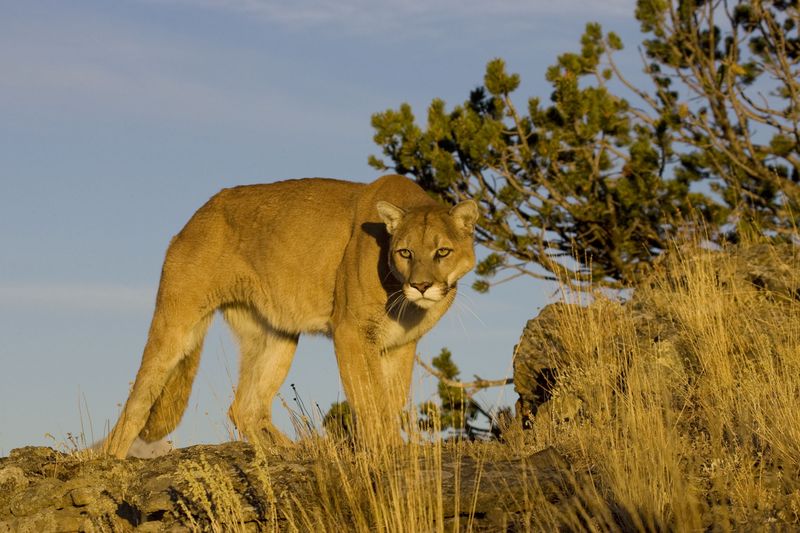
Mountain Lions, also known as cougars, inhabit various parts of Nevada, particularly in remote mountainous areas. These solitary and elusive predators are masters of stealth, often unseen by those who roam their territories.
Their diet primarily consists of deer, but they are opportunistic hunters, adapting to the availability of prey. Observing one in the wild is a special experience, as their keen senses and agility make them adept hunters.
While encounters with humans are rare, hikers should remain aware of their presence, ensuring safety by traveling in groups and making noise to avoid surprise encounters. This captivating predator embodies the wild spirit of Nevada.
3. Greater Sage-Grouse
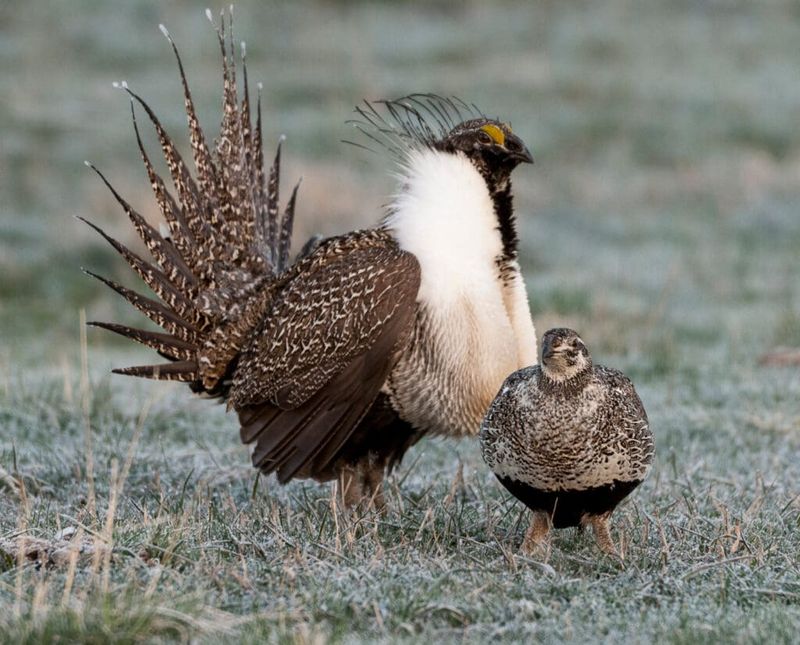
The Greater Sage-Grouse, with its striking appearance and elaborate courtship dance, is a remarkable bird found in Nevada’s sagebrush regions. During mating season, males perform captivating displays, puffing their chests and fanning their tail feathers to attract females.
This bird relies heavily on sagebrush for its habitat, feeding, and nesting needs. Conservation efforts are crucial to protect these areas, ensuring the survival of this unique species.
Spotting a Sage-Grouse can be a memorable experience, offering a glimpse into the intricate rituals of nature. They play a vital role in the ecosystem, highlighting the need for balanced conservation practices in Nevada.
4. Pallid Bat
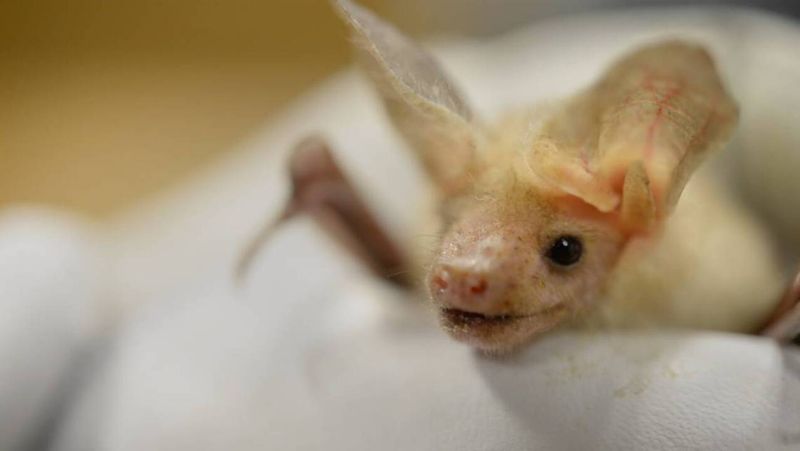
The Pallid Bat, a nocturnal creature, is often found in Nevada’s desert landscapes. Known for its pallid fur and large ears, it is a masterful hunter of insects and small vertebrates like lizards and mice. Unlike many bats, Pallid Bats often hunt on the ground, using their keen sense of hearing to locate prey.
They play a vital role in controlling insect populations, contributing to the balance of the ecosystem. Observing these bats at dusk can be a thrilling experience as they swoop gracefully through the air. Their unique hunting habits and ecological importance make them a fascinating subject for wildlife enthusiasts.
5. American Black Bear
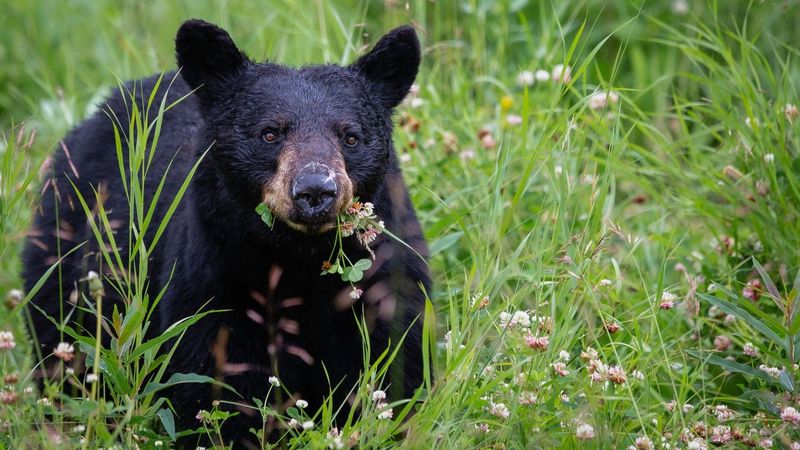
In the dense forests of Nevada, the American Black Bear roams freely, foraging for berries, plants, and occasionally small mammals. These bears are adaptable, sometimes venturing into human territories in search of food.
While generally shy, they can become bold when food is scarce, making it essential for campers to secure their supplies properly.
Black Bears are an important part of the forest ecosystem, aiding in seed dispersal and promoting forest health. Spotting one in the wild can be both exhilarating and educational, providing insight into their foraging behaviors and the delicate balance of nature they help maintain.
6. Mojave Desert Tortoise
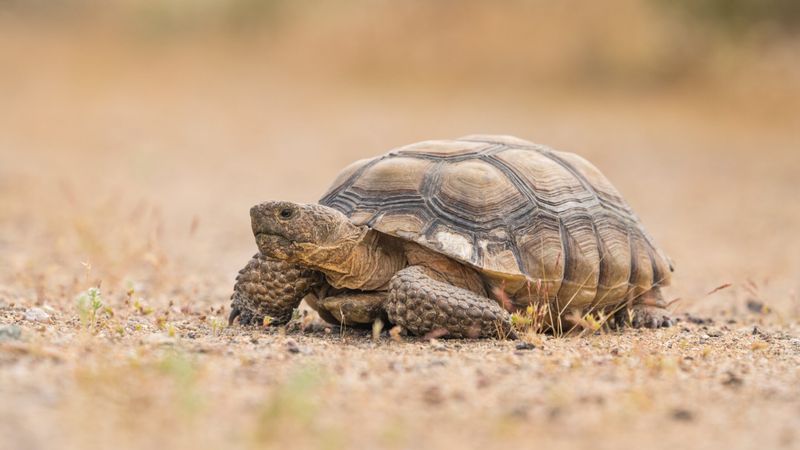
The Mojave Desert Tortoise is a resilient survivor of Nevada’s harsh desert environment. With its sturdy shell and slow, deliberate movements, it thrives in the arid landscape, where temperatures can soar. These tortoises spend much of their lives in burrows, escaping the heat and conserving water.
Their diet mainly consists of desert vegetation, making them crucial to the ecosystem by aiding in seed dispersal.
Observing a Desert Tortoise in its natural habitat offers a unique glimpse into a life perfectly adapted to the desert. Their conservation status highlights the importance of protecting these ancient creatures and their delicate environment.
7. Pronghorn Antelope
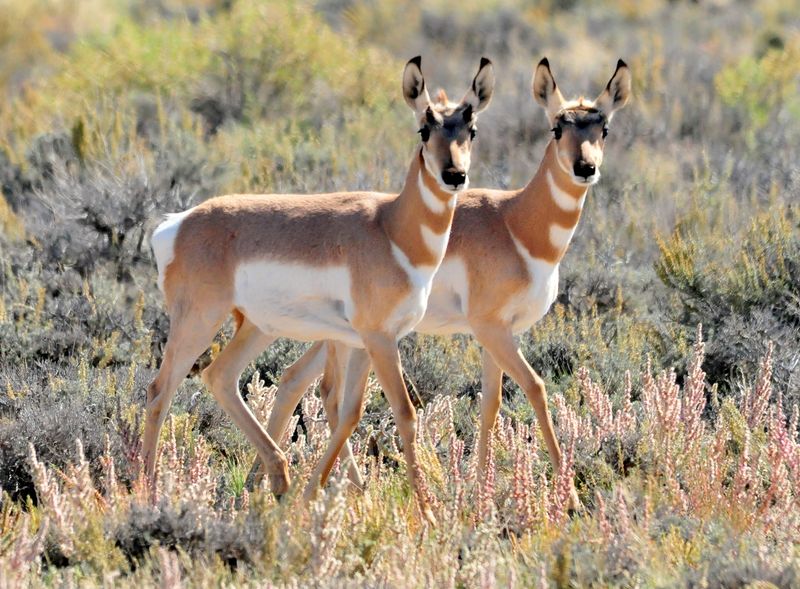
Often referred to as the fastest land animal in North America, the Pronghorn Antelope is a remarkable sight on Nevada’s open plains. These animals are built for speed, with powerful legs and keen eyesight to detect predators.
While they resemble antelopes, they are actually more closely related to giraffes. Their unique horns and striking appearance make them easily recognizable.
Witnessing a Pronghorn in full sprint is an unforgettable experience, showcasing nature’s adaptation and resilience. These animals contribute to the ecological diversity of Nevada, representing the vibrant life that thrives in this region.
8. Burrowing Owl
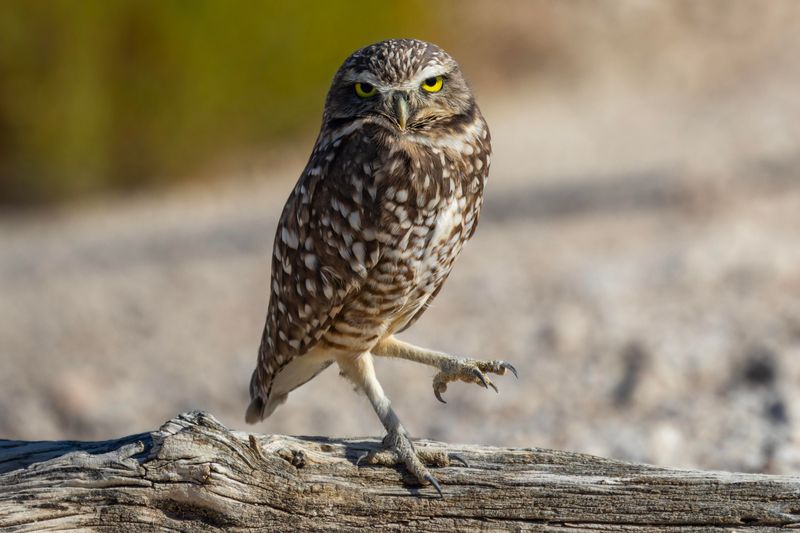
Burrowing Owls, small yet mighty, inhabit the open landscapes of Nevada. Known for their distinctive behavior of nesting in burrows, these owls are active during the day, making them easier to spot than most owl species.
Their diet includes insects and small rodents, which they hunt with keen precision. Burrowing Owls often coexist with prairie dogs, sharing burrows and helping control rodent populations. These charming birds are a delight to observe, with their curious expressions and engaging antics. They play an essential role in the ecosystem, highlighting the interconnectedness of species in Nevada’s wild.
9. Kit Fox
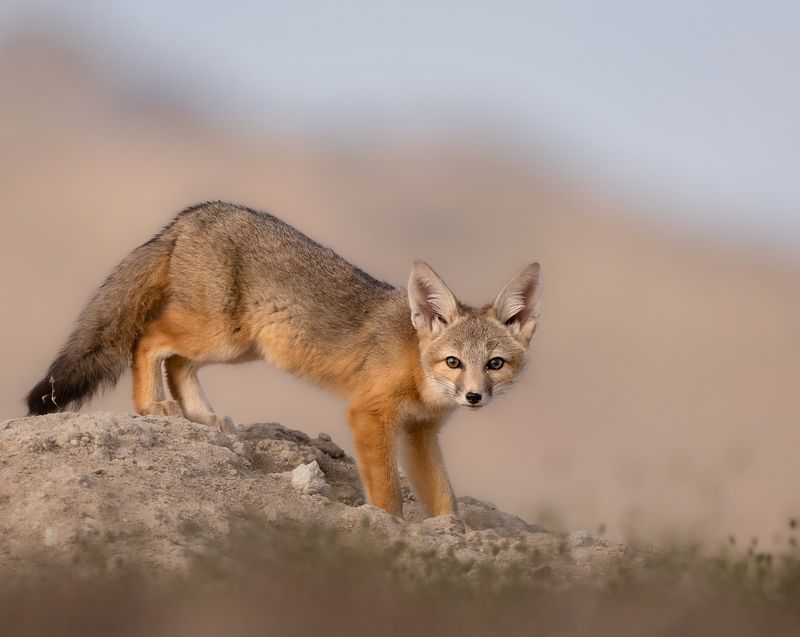
The Kit Fox, with its large ears and slender frame, is a nocturnal predator found in Nevada’s desert regions. These foxes are masters of adaptation, thriving in the challenging conditions of their arid environment.
Hunting mainly at night, their diet includes rodents, insects, and occasionally fruits. Their keen sense of hearing and agility make them effective hunters in the desert landscape.
Spotting a Kit Fox requires patience and luck, as they are elusive and quick. These fascinating creatures contribute to the balance of their ecosystem, embodying the resourcefulness required to survive in Nevada’s wild.
10. Western Diamondback Rattlesnake
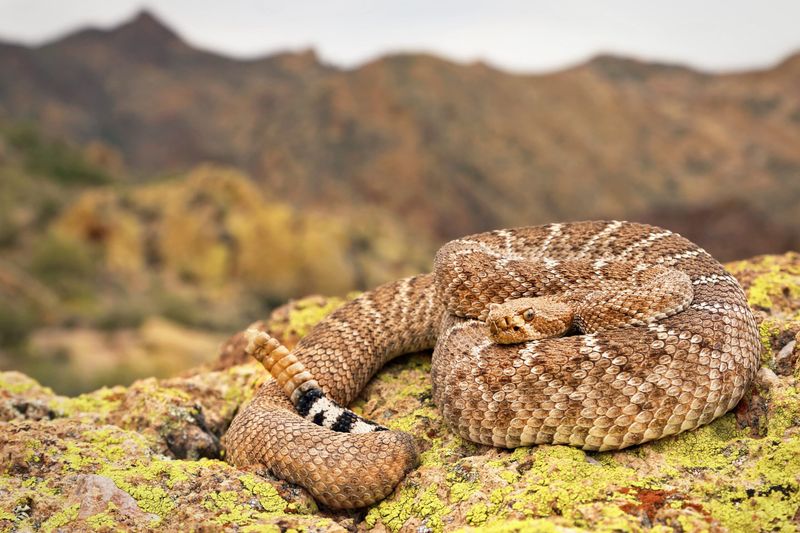
The Western Diamondback Rattlesnake is one of the most well-known reptiles in Nevada, recognized for its distinctive rattle and diamond-shaped patterns. These snakes are found in desert and rocky areas, where they blend into their surroundings.
Known for their defensive rattle, they generally avoid humans but can become aggressive if threatened. Their venomous bite is dangerous, making it essential for hikers to exercise caution.
These snakes play a vital role in controlling rodent populations, maintaining the ecological balance. Encountering a rattlesnake is a reminder of the wild and untamed beauty of Nevada’s natural world.
11. Nevada Wild Horse
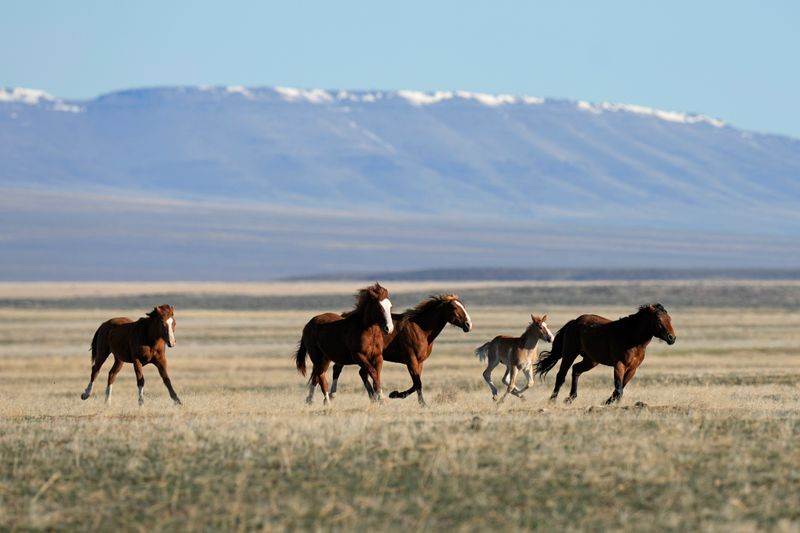
Nevada is home to iconic Wild Horses, symbols of freedom and the untamed spirit of the American West. These horses roam the open ranges, living in herds and displaying complex social behaviors. Their presence in Nevada is both celebrated and controversial, as they compete with cattle for grazing lands.
Efforts to manage their populations ensure a balance between conservation and agricultural interests. Observing Wild Horses in their natural habitat can be a moving experience, connecting viewers to a piece of living history. They embody the enduring wildness of Nevada, representing a legacy of resilience and independence.
12. Elk

Elk, with their impressive antlers and commanding presence, are a captivating sight in Nevada’s forests and grasslands. These large herbivores graze on grasses and shrubs, playing a crucial role in their ecosystem.
During the rutting season, male elk can be heard bugling, a haunting call used to attract females and establish dominance. This period offers a unique opportunity for wildlife enthusiasts to experience the dramatic displays of nature.
Elk contribute to the biodiversity of Nevada, supporting predators and scavengers alike. Encountering an elk in the wild is a memorable event, highlighting the rich tapestry of life within the state.

